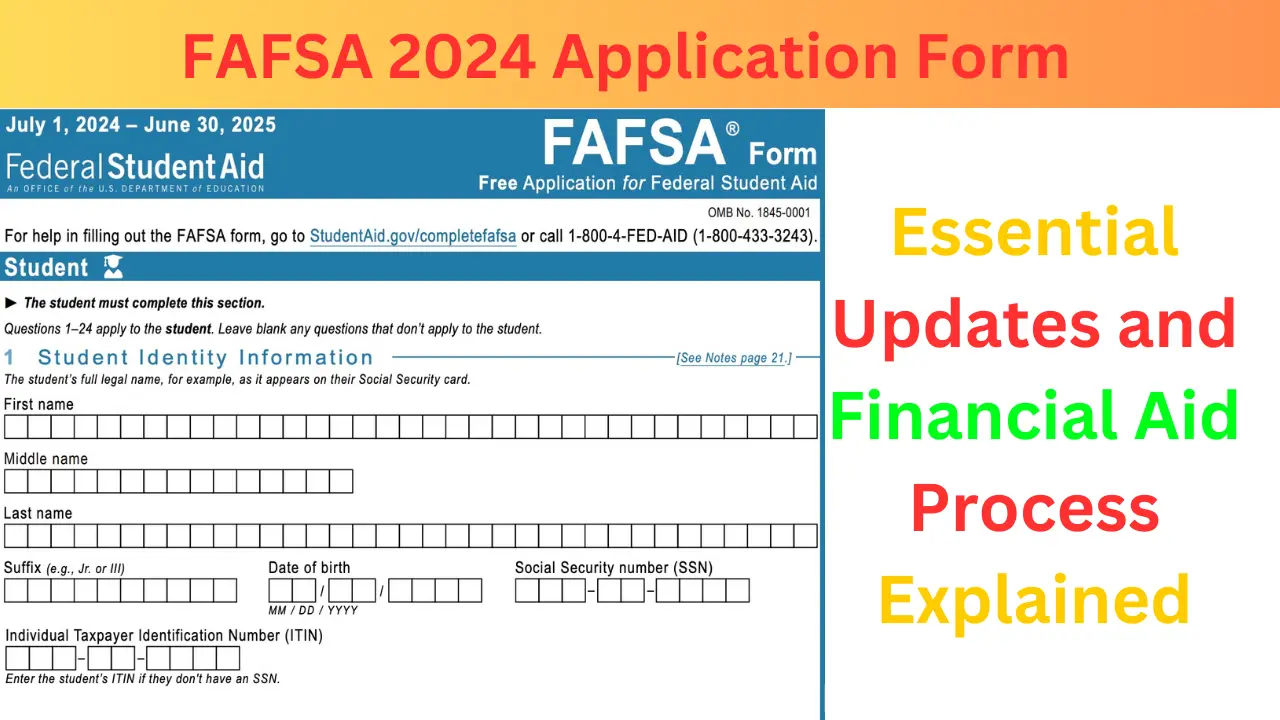The Free Application for Federal Student Aid (FAFSA) for the 2025-2026 school year will officially open on December 1, 2024, giving students and families access to crucial financial aid. The FAFSA is essential for millions of U.S. students seeking financial assistance for college, including Pell Grants, federal student loans, and work-study programs. The application process was significantly improved this year following successful beta testing, ensuring a smoother rollout than last year’s delayed opening.
Key Updates for the FAFSA 2025-2026 Application
The Department of Education has introduced important changes to make the FAFSA process easier and faster, especially for students from low-income families.
- Fewer Questions: The new FAFSA form is now two-thirds shorter than previous versions, reducing the number of questions applicants need to answer.
- Automatic Data Retrieval: The form integrates tax return information automatically, eliminating the need for manual entry of financial details. This is especially helpful for families who have previously struggled with complex paperwork.
- Simplified Parent Identity Verification: Students can now submit their FAFSA even if their parent’s identity has not been verified, providing greater accessibility for families where parents do not have a Social Security Number.
These changes aim to streamline the process and make it easier for students to apply for financial aid.
How to Submit the FAFSA Form for 2025-2026
Submitting the FAFSA is a straightforward process if you follow these steps:
- Create Your FSA ID: Both the student and, if applicable, the parent must create an FSA ID, which will serve as their digital signature.
- Gather Required Documents: Collect essential documents like your Social Security Number, recent tax returns, W-2s, bank statements, and records of untaxed income.
- Access the FAFSA Form Online: Go to studentaid.gov to complete the form. You can also request a paper version if necessary.
- Enter Personal and Financial Information: Fill in your details and use the IRS Data Retrieval Tool (if eligible) to import your tax information directly into the FAFSA form.
- List Schools and Submit Information: Include the codes for all schools you’re applying to and answer questions about your dependency status.
- Sign and Submit the FAFSA: Both the student and the parent (if applicable) must use their FSA ID to sign the form electronically.
- Review Confirmation: Once submitted, you will receive a confirmation page. Double-check all details to ensure accuracy.
The average time to complete the FAFSA is about an hour, depending on the complexity of your financial situation. For additional support, the Department of Education has increased customer service agents to help students through the process.
Financial Aid Opportunities Through FAFSA
The FAFSA opens the door to various types of financial assistance for college, including:
- Pell Grants: These are need-based grants that do not need to be repaid. More students are expected to qualify for Pell Grants in the upcoming cycle due to the increased funding.
- Federal Student Loans: Low-interest loans that are repaid after graduation or when you leave school.
- Work-Study Programs: These programs allow students to work part-time while in college, helping them cover educational expenses.
The updates to the FAFSA process are designed to make it easier for low-income students to access these vital resources.
Legislative Updates for FAFSA Submission Dates
The Department of Education has also made progress on legislative measures to ensure FAFSA submissions are more predictable in the future. Both the Senate and the House of Representatives have passed a bill that would make it mandatory for the FAFSA to open on October 1 each year. This law, if signed, would standardize the opening date, making it easier for families to plan.
In the 2024-2025 cycle, a 3% decrease in FAFSA submissions was reported, primarily due to confusion from last year’s delays. With the improvements made to the form and expanded support services, the Department of Education aims to see an increase in submissions this year.
Why You Should Submit the FAFSA Early
It is crucial to submit the FAFSA as soon as possible to maximize your chances of receiving financial aid. Many grants, loans, and work-study opportunities are awarded on a first-come, first-served basis. Completing the FAFSA early ensures that you have the best opportunity to receive all the financial aid you’re eligible for.
In conclusion, the updated FAFSA form for the 2025-2026 school year aims to simplify the process and make financial aid more accessible to students, particularly those from low-income backgrounds. With new features like automatic data retrieval and fewer questions, the application process is faster and more user-friendly than ever before.



